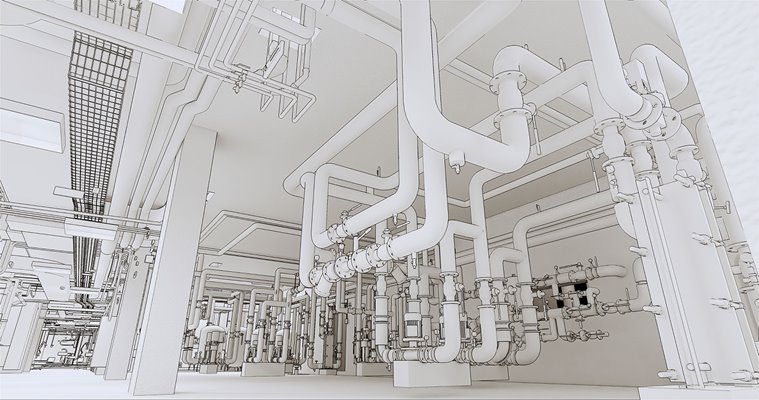Note: This is a general outline for the course. Your agenda will be discussed in detail on the first day of your virtual course.
Module 1: Introduction to Plant Design
Piping Introduction, A Typical Plant Design Project, Plant Layout, Process Flow Diagram, Piping and Instrumentation Diagrams, Piping Layouts, Isometrics
Module 2: P&ID’s Symbols, Piping Specifications and Line Lists
P&ID’s, Piping and Equipment Designations and Symbols, Instrumentation Designations and Symbols, Piping Line Lists, Piping Documentation (Drawing List, Equipment List, Piping Specifications)
Module 3: Piping
Piping, Pipe Manufacture, Pipe Fabrication Practices (Shop Fabrication, Field Fabrication, Joining Pipes, Modular Design, Pressure Testing), Pipe Designation, Fittings (Butt Weld Fittings, Threaded and Socket Weld Fittings, Victaulic Fittings, Compression Fittings, High Density Polyethylene Pipe (HDPE)), Branch Connections, Flanges, Shop Inspection, Installation)
Module 4: Valves
Valve Function, Gate Valves, Globe Valves, Plug Valves, Ball Valves, Check Valves (Swing Check Valves, Lift Disc Check Valves, Ball Check Valves, Wafer Check Valves, Silent Check Valves), Butterfly Valves, Diaphragm Valves, Pinch Valves, Valve Symbols, Valve Dimensions
Module 5: Pipe Supports
Pipe Supporting Systems, Recommended Pipe Spans, Pipe Spacing, Pipe Shoes, Base Ells and Dummy Legs, Pipe Guides, Pipe Restraints (Limit Stops), Rod Hangers, Variable Spring Hangers, Constant Load Hangers
Module 6: Steam Piping
Steam Piping, Steam Traps, Steam Trap Selection, Steam Control Sets, Steam Tracing, Hose Stations, Expansion of Steam Lines
Module 7: Pumps
Centrifugal Pumps, ANSI End Suction Pump, API 610 Pumps, Pump Piping, Cavitation, Pump Curves, Pump Calculation
Module 8: Thermal Expansion
Piping Stress Analysis Logic, Minimum Flexibility Requirements, Allowable Expansion Stress Range, Flexibility, Stress Analysts’ Function, Allowable Expansion Stress Range, Codes and Regulations, Scope of Code Rules, Flange Leakage, Building Flexibility into your Layouts, Loads at Pumps, Loads at Steam Turbines, Loads at Compressors, Loads at Exchangers, Loads at Vertical Vessels, Excessive Thrusts or Moments on Connected Equipment
Module 9: Line Sizing
Calculating Wall Thickness, Code Formula for Wall Thickness, Wall Thickness Example Problems, Friction Loss Calculations for Water, Friction Loss Calculations for Viscous Fluids, Friction Loss Calculations for Gases, Vapors, Steam and Air
Module 10: Review, Case Studies and Assignment


